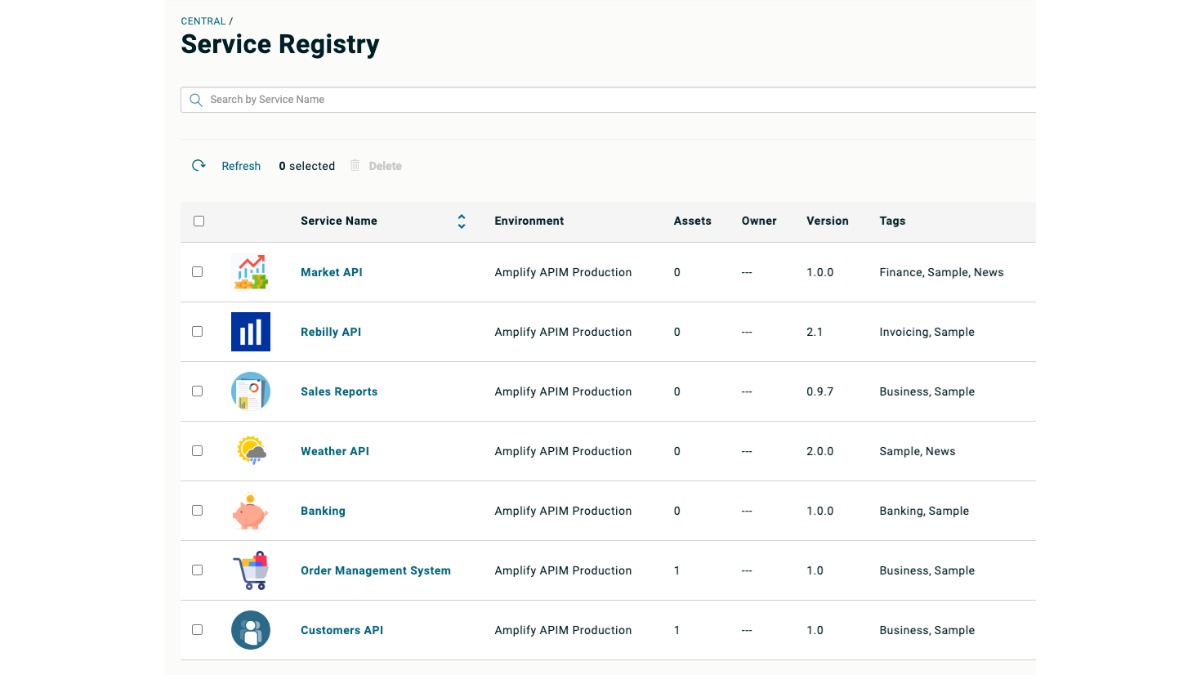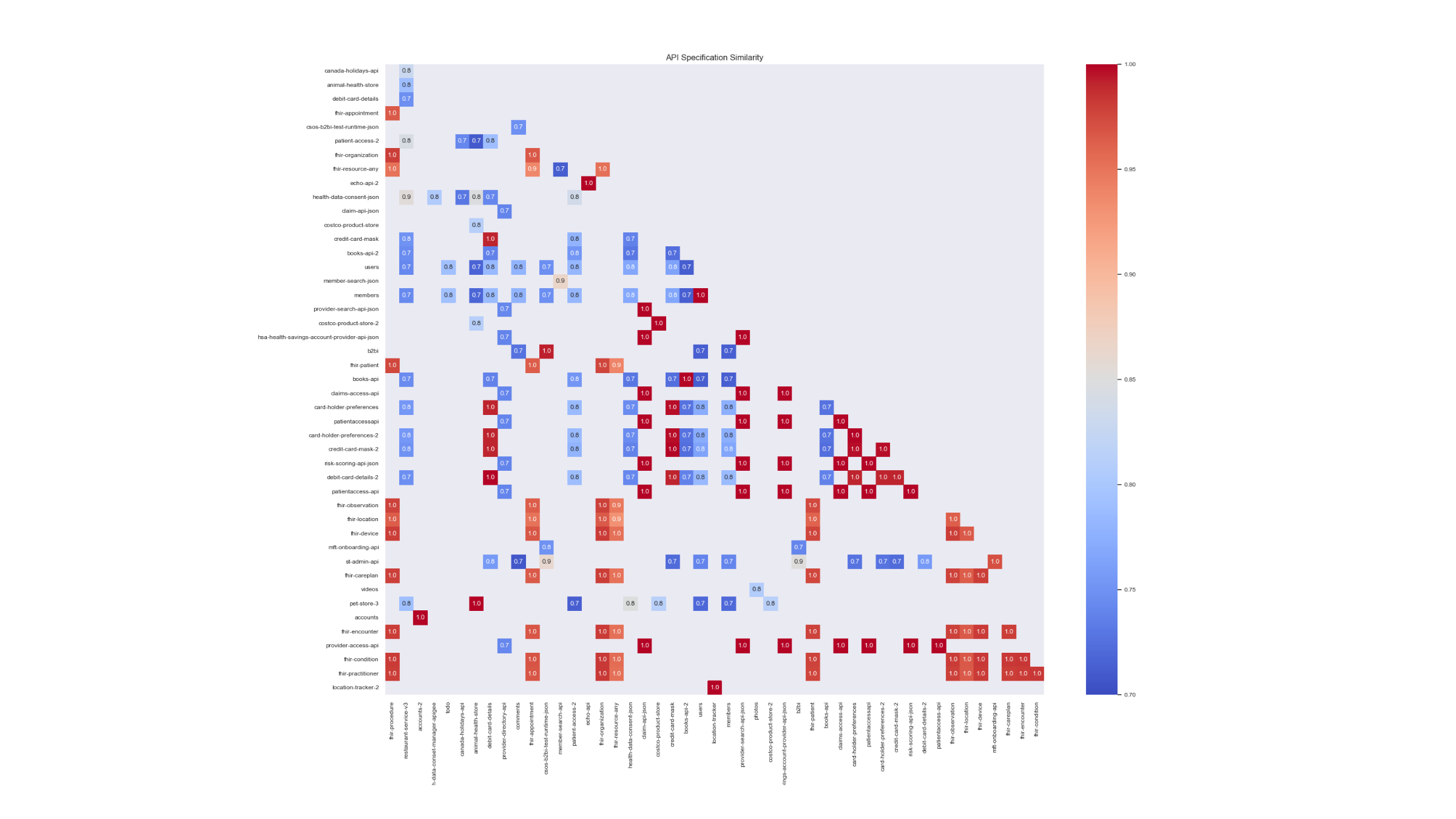Adopting Amplify Engage is the key to unlocking hidden value in your API management solution. Many enterprises aren’t getting all the value they hoped out of their API program. They’re struggling to drive API adoption, understand usage, and eliminate unnecessary costs.
This article will explore how Amplify Engage can provide the information needed to identify potentially redundant APIs and make informed decisions about where to consolidate.
Duplicate APIs can result from siloed development within a single organization or from acquisition. Regardless of the source, they can introduce unnecessary expense, which weighs down an efficient API program.
One early value of an API marketplace is that it allows you to round up and visualize APIs under your universal API management.
By consolidating all your APIs across platforms, gateways, and repositories into one enterprise API registry, you can see what you have and make better decisions thanks to rich data about API structure and usage gathered by the marketplace.
So, what you do with all that data?
Let’s explore one use case for the rich API dataset provided by Amplify Engage to help prevent API duplication.
The cost of duplicate APIs
Duplicate APIs are very expensive. When you consider what it takes to build one, we’ve found companies stand to save some $30K on average every time they reuse an API. That’s not even counting the expense of maintaining two APIs that do the same thing.
For Groupe BPCE, which uses our Amplify Platform, API reuse is immediately evident in the fact that they have 217 apps consuming 81 APIs.
“This is a major factor in reducing the time and cost involved in developing new services,” notes Frédéric Pinaud, IT Program Director at Groupe BPCE. “One example is our mortgage broker platform. Customers can now submit their personal details a single time and receive multiple different quotations tailored to their exact profile.”
Duplicating APIs is also just plain inefficient. But working in multi-cloud, multi-team, and multi-gateway environments leads very easily to API sprawl. When diverse development teams are using various API gateways around the world, it’s easy to unknowingly create duplication.
Because Amplify Engage brings all your APIs into a unified API view, you have a single pane of glass over all your APIs. I’ve been exploring some of the ways you can use that data.
Today, let’s look at how it could help you reduce the number of duplicate APIs in your organization. Once you have this information you might identify APIs with enough overlap that it would be worth pruning them to reduce expenses.
How to eliminate duplicate APIs
The initial step is to configure the Amplify Marketplace to communicate with your universal API management solution. Amplify Marketplace uses lightweight agents to automate the discovery, capture, and validation of APIs into one registry.

Once you’ve turned on all these agents and pointed them at your gateways, you can see all the APIs you have. So, what next?
This is where it can become a bit of a slog, a more manual effort. You might get lucky and have API names that match exactly. The odds of this occurring aren’t the greatest and since API names are not necessarily tied to their function, they are not the best indicator of what an API actually does.
The best way to determine what an API does is by looking at its specification. This is where you will find the endpoints and data models, a clear indication of what the API is designed to do.
If you compare API specifications, it will give you a pretty good indication of whether or not APIs may be similar. Amplify Marketplace collects the API specifications as part of the discovery process, so we have all the data we need, but sifting through all the API documentation on your own would take a lot of time.
Thankfully, we have plenty of artificial intelligence tools at our disposal these days!
Amplify Marketplace provides a Command Line Interface (CLI) which makes it very easy to interact with the marketplace and extract any information from it. Using the CLI, I grabbed all specifications and used a Python script which ran the data through an AI model, asking it to compare each specification to all the others.
Using cosine-similarity, I was able to generate a matrix which can provide a sense of how similar the APIs are.
In this example, I instructed the scripts to filter out data, choosing to eliminate APIs that have less than a 70% similarity match.
After the AI model has generated the dataset, I then visualize it as a heat map. In my example below, 1 is a 100% match (meaning, I clearly have a duplicate API) and .7 is 70%, .8 80% match, and so forth.

Looking at my heat map, you can see for example that an API called “risk scoring API” is exactly the same as “claim API.” We have a match!
In this example I used TF-IDF (Term Frequency – Inverse Document Frequency) and cosine similarity from scikit-learn to generate the dataset. This is a very simple approach but does appear to provide acceptable results in this case. Amplify Marketplace provides the data needed for analysis. Feel free to apply the algorithms of your choice to the data and see what results you can get.
Pandas and NumPy libraries are used for data analysis and manipulation. Seaborn and Matplotlib libraries are used for data visualization.
You can find the code I used here.
Now, you have a list of APIs you’ll want to look at more closely. Go to the Marketplace’s Service Registry and confirm the indicators provided by the AI model. If you do determine there is a considerable match you next need to decide what to do about it.
Amplify Marketplace provides the information you need to in order to make an informed decision.
Head to Business Insights in your marketplace. In addition to discovering the APIs from your API gateways, the marketplace is also collecting data on how those APIs are being used and creating visualizations of the data.
Here you can get a sense of which of your duplicates are being used, how, and who is using them.
One of them might be a ghost, an API that’s not getting any use – that one is easy to eliminate. Or you might learn that one of them is used 70% of the time and the other one 30% of the time – this would give you a better idea of how do to consolidate them.
Armed with this data and some simple analysis tools, you can start making intelligent decisions about the APIs you’ve discovered throughout your organization.
What else could you do with this data?
Amplify Engage is a powerful tool for API Product Managers. At Axway, we’ve architected this solution so the data is extremely easy to get at. This was an example of reducing duplicate APIs in your organization thanks to easy-to-access data – not just about your APIs, but about how they’re being used, too.
What you do next with that data is up to you. We’d love to hear how you’re using this new, more easily-accessible data from Marketplace, and I’ll continue to explore new ways to extend those capabilities for greater value.
Learn more about how Amplify Engage helps you extend and draw value from the APIs you already have.


